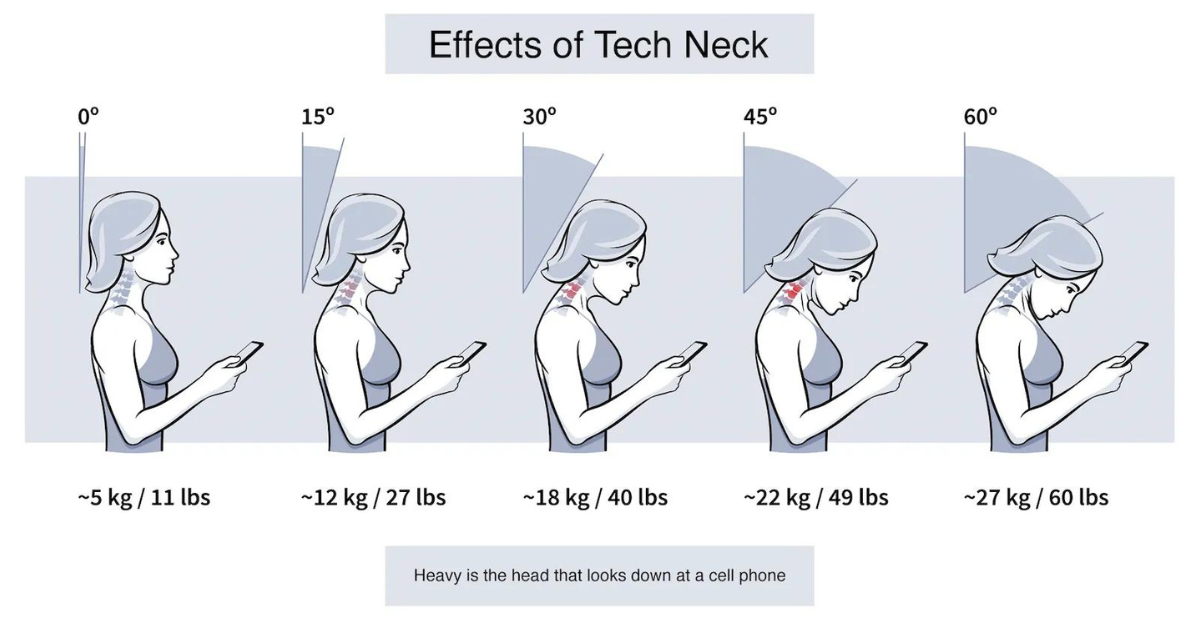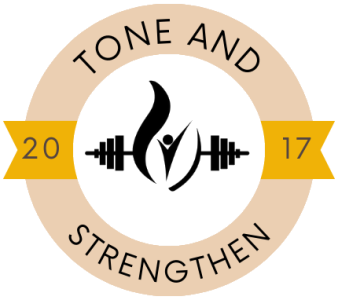
Tech Neck: The Silent Threat to Your Health You Can’t Ignore!
Sitting on the park bench, I noticed a common habit among people last week. Observing this habit, I realized how common it is among humans now. I’m sure you have observed it too. It is the prevalence of “tech neck.”
Whether it’s in the comfort of our homes, bustling offices, busy streets, or even while waiting in line at the grocery counter, I’m sure you’ve seen the strain we put on our muscles while using phones, tablets, and computers, a problem that is only expected to worsen as our reliance on these devices continues to grow. You might have experienced pain because of it as well.
The statistics paint a vivid picture of our digital habits. In 2022, Americans spent an average of over eight hours per day engaged with digital devices, and a significant portion of that time was allocated to non-voice activities, according to estimates by eMarketer.
As we become increasingly immersed in the digital realm, it’s important that we recognize the impact this has on our bodies. The ramifications of tech neck can be far-reaching, affecting our overall posture, muscle health, and overall well-being. In this blog series, we will explore the causes, consequences, and potential solutions to help you combat tech neck in our modern world.
Consequences of Tech Neck
But have you ever stopped to consider the consequences? The average human head weighs 12 pounds, and our spine, neck, and muscles are perfectly designed to balance our head at the very top of our bodies, serving as the master controller of every move we make.

Our cervical spine, the part of spine in the neck, is like a spring-like mechanism that effortlessly suspends our head, allowing it to seamlessly oversee everything we do. This is the natural state of our neck, working in perfect harmony. However, the repetitive body position we adopt while peering down at our electronic devices disrupts this delicate balance. Our upper body posture contorts as we extend our necks forward, creating a forward head posture.
The more our head and neck extend forward and focus downward, the stress on our cervical spine increases exponentially. For every inch forward the weight on cervical spine doubles. So, a head that’s placed 2 inches forward would weigh 36 pounds on our spine. This unnatural strain places undue pressure on our necks, shoulders, and the entire spinal column, affecting our overall well-being.
Tech Neck is not just a minor inconvenience; its effects can have serious implications on our health. This posture-related condition has been linked to a range of issues, including.
- Headaches
- Neurological problems
- Depression
- Heart disease
- Early death

The symptoms may initially arise subtly, but each time we hunch over our phones, the chances of experiencing a negative impact on our health increase.
What’s even more alarming is the prevalence of this behavior among children and young adults, whose spines are still in the crucial stages of development. It’s crucial to address this issue early on to prevent long-term consequences and safeguard their future well-being.
In this blog series, we will explore the causes, consequences, and potential solutions to help you combat tech neck in our modern world. Let’s first find out how to sit, stand and lie down while keeping our neck supported.
Sitting Unhunched
- Place your feet flat on the floor or a footrest.
- Place your ankles in front of your knees without crossing your legs.
- Your knees and hips should be at a 90º angles.
- Your hip bones should be slightly higher than your knees.
- Support your low-back and mid-back with a cushion.
- Relax your shoulders and keep your forearms parallel to the ground.
- Shrug your shoulders to reset them every 15-20 minutes.
Standing Unhunched
- Keep your feet about hip-width apart.
- Keep your weight primarily on the balls of your feet, while keeping your knees soft.
- Stand straight and tall with your shoulder blades pulled backward.
- Keep your earlobes should in line with your shoulders.
- Shift your weight from one foot to the other if you have to stand for a long time.
Sleeping Unhunched
- Sleep on a mattress that’s comfortable for you. It’s generally recommended to sleep on a firm mattress.
- To help prevent stiffness in the neck muscles, keep their head and neck aligned with the rest of their body.
- A small pillow at the base of the neck can keep the head in a neutral position.
- Placing a circular pillow under the knees helps keep the muscles along the spine flat and relax muscles in the neck.
By aligning your neck while sitting, standing and sleeping you can avoid the strain on your neck. Simple postural habits can have long lasting affect on our health. Checkout my book Unhunched where I explain tech neck in detail.

This Post Has 0 Comments